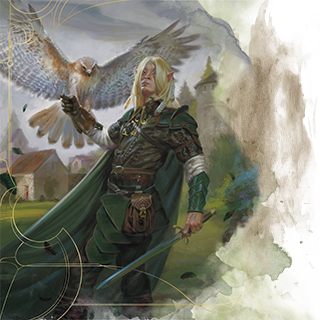
You master the techniques needed to train and handle animals. You gain the following benefits.
• Increase your Wisdom score by 1, to a maximum of 20.
• You gain expertise in the Animal Handling skill.
• Train Animals: With consent of your DM, these DCs can be used by anyone using Animal Handle to train a beast; you can only train beasts with Handle animal, and Druids & Beast Master Rangers, have advantage on Animal Handling checks made with beasts, but for everyone Animal Handling checks made with creatures that have an intelligence score over 3 are made with disadvantage.
With this feat, your mastery of animal handling allows you train any creature, including those that are not beasts, with an intelligence score less than half your intelligence or wisdom score, and a CR no more than half your level without disadvantage. Training creatures that are not beasts adds a +5 to the DC.
Teach an Animal a Trick
You can train a beast to learn specific behaviors using the Animal Handling skill. The time and difficulty required for training depend on the behavior, as well as a successful Animal Handling check against the indicated DC. You can teach a creature a number of tricks equal to three times it’s intelligence score; thus, a creature with an Intelligence score of 1 can learn a maximum of three tricks, while an animal with an Intelligence score of 2 can learn a maximum of six tricks. Possible tricks (and their associated DCs) include, but are not necessarily limited to, the following:
- Attack (DC 15): The beast attacks apparent enemies. You can specify a target for the beast to attack as an action. Normally, an animal will attack only humanoids, monstrosities, giants, or other beasts. Teaching an animal to attack all creatures (including such unnatural creatures as undead and aberrations) counts as two tricks.
- Come (DC 9): The beast comes to you, even if it wouldn't normally.
- Defend (DC 15): The beast defends you or another character, even without a command.
- Down (DC 12): The beast breaks off from combat or backs down.
- Fetch (DC 10): The beast retrieves an item you point to.
- Guard (DC 14): The beast stays in place and prevents others from approaching.
- Heel (DC 9): The beast follows you closely.
- Perform (DC 11): The beast performs simple tricks.
- Search (DC 12): The beast searches for living creatures in an area.
- Stay (DC 10): The beast remains in place until you return.
- Track (DC 16): The beast tracks a scent using its sense of smell.
- Work (DC 10): The beast pulls or pushes a load.
Train an Animal for a Purpose
Rather than teaching a creature individual tricks, you can simply train it for a general purpose. Essentially, an animal’s purpose represents a preselected set of known tricks that fit into a common scheme, such as guarding or heavy labor. The animal must meet all the normal prerequisites for all tricks included in the training package. If the package includes more than three tricks, the animal must have an Intelligence score of 2.
An animal can be trained for only one general purpose, though if the creature is capable of learning additional tricks (above and beyond those included in its general purpose), it may do so. Training an animal for a purpose requires fewer checks than teaching individual tricks does, but no less time.
Combat Riding (DC 17): An animal trained to bear a rider into combat knows the tricks attack, come, defend, down, guard, and heel. Training an animal for combat riding takes six weeks. You may also “upgrade” an animal trained for riding to one trained for combat riding by spending three weeks and making a successful DC 16 Handle Animal check. The new general purpose and tricks completely replace the animal’s previous purpose and any tricks it once knew. Warhorses and riding dogs are already trained to bear riders into combat, and they don’t require any additional training for this purpose.
Fighting (DC 16): An animal trained to engage in combat knows the tricks attack, down, and stay. Training an animal for fighting takes three weeks.
Guarding (DC 15): An animal trained to guard knows the tricks attack, defend, down, and guard. Training an animal for guarding takes four weeks.
Heavy Labor (DC 13): An animal trained for heavy labor knows the tricks come and work. Training an animal for heavy labor takes two weeks.
Hunting (DC 17): An animal trained for hunting knows the tricks attack, down, fetch, heel, seek, and track. Training an animal for hunting takes six weeks.
Performance (DC 12): An animal trained for performance knows the tricks come, fetch, heel, perform, and stay. Training an animal for performance takes five weeks.
Riding (DC 11): An animal trained to bear a rider knows the tricks come, heel, and stay. Training an animal for riding takes three weeks.
Rear a Wild Animal
To rear a wild animal means to raise a wild creature from infancy so that it becomes domesticated. A handler can rear a number of wild animals equal to his or her wisdom bonus to a minimum of 1.
A successfully domesticated animal can be taught tricks at the same time it’s being raised, or it can be taught as a domesticated animals.
Even after domestication, you can only control a certain number of wild animals. You can control a number of wild animals equal to your proficiency bonus, but this does not include creatures that you control through magic or class features.









Comments